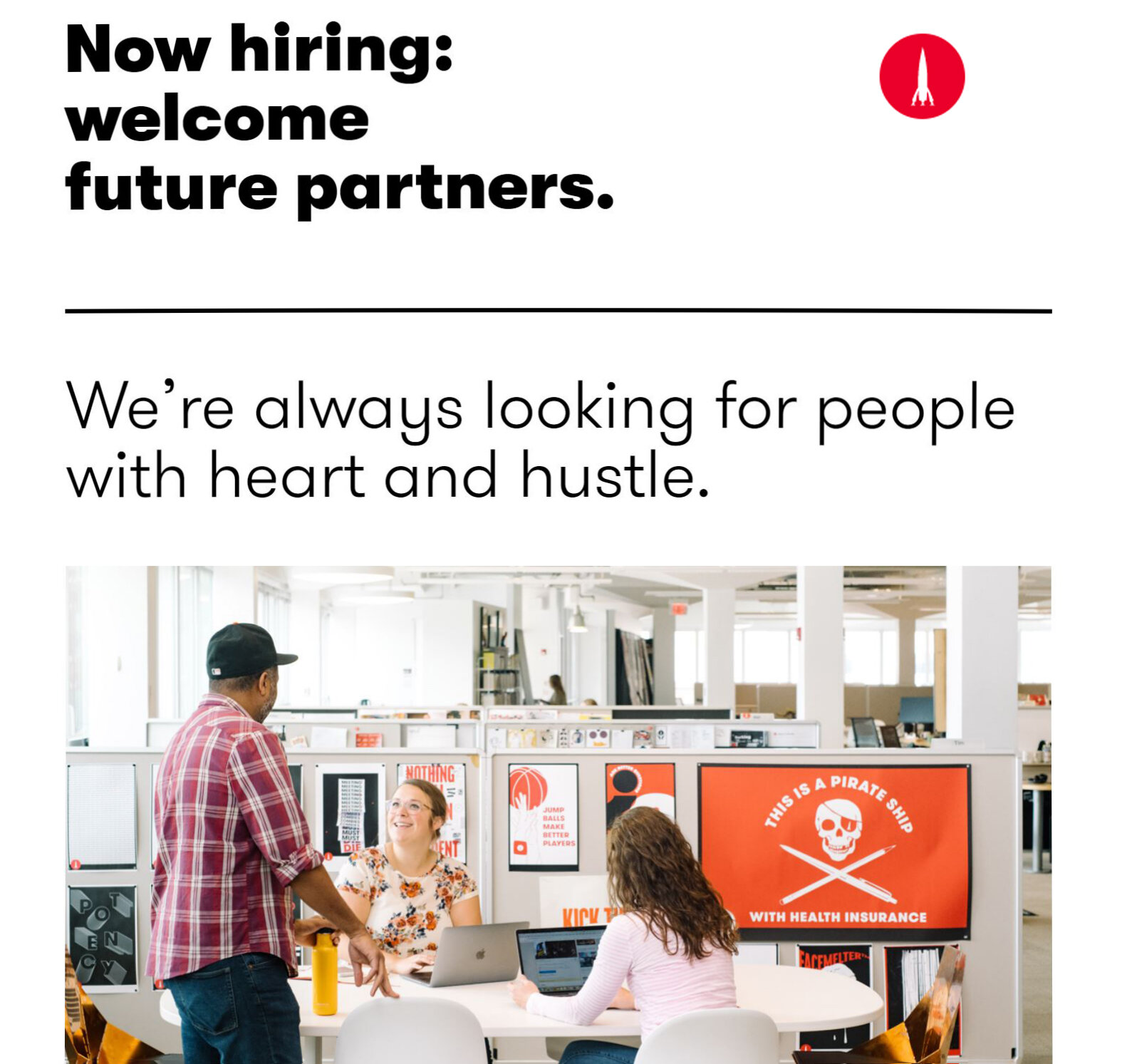Why are job opening descriptions so unbelievably lame?
By Roy Harryman
Job openings are exciting: You need a gig! We’ve got one! Just click here!
Reading these job descriptions, however, is not exciting. It is soul sucking.
These mind-numbing descriptions diminish the life force of the job seeker. But they’re also detrimental to the company’s brand.
Whatever we create in the name of the company is branding, whether we like it or not. How many people will see a company’s job description? Hundreds, certainly. Likely thousands. Ask the analytics team to count up the impressions, then read it and weep.
Recipe for mediocrity
Here’s the recipe for the vast majority of corporate marketing job descriptions:
Four cups corporate jargon
Seven cups job responsibilities
Two cups of dour, sober, ultra-serious tone
Four tbsp. cliches
Take ingredients and scramble, bake, then reject applicant.
Let me illustrate each.
Corporate jargon
“Candidate will be agile, team-oriented and represent all aspects of the Smith Corp. brand across multiple media platforms while simultaneously serving as content curator, archivist and brand ambassador who engages in industry best practices. The successful candidate will leverage brand collateral to result in maximum brand exposure in vertical markets, resulting in robust metrics from social media, email marketing and website analytics.”
Sign me up. Actually, beam me up.
Nobody talks like that. The best single sentence of written communications training I’ve heard is, “Write like you wish you could speak.” In other words, if you wouldn’t say it, don’t write it. It’s easier to write a vague paragraph loaded with jargon than to truly distill the essence of the job.
The well-meaning folks who write these arcane job descriptions don’t personally communicate like this, even at HR conferences. It’s a bad habit that has spread from academia and government to the business world.
It’s like taking the words “ham sandwich” and turning them into:
“The successful meal will consist of two wedges of carbohydrate-dense outer material; housed within these slices will be an animal-based protein associated with the buttock and thigh of a hog; the preferred sandwich will also contain the option of a dairy-based, thinly sliced protein-fat square sometimes referred to as cheese (vegan options are a bonus). Garnishes as assigned. This sandwich will travel up to 60 percent of the time.”
Way too many responsibilities and sky-high expectations
The kitchen sink is not required on the “first date” – the pre-interview reading of the job post. In his wonderful book “The 80/20 Principle,” Richard Koch explains that a few things (20 percent) take up the vast majority of our time and net the majority of our results (80 percent). The job post is not an employment contract. It is advertising … yes, that’s right! It should attract, not repel. This is how you repel:
“Job duties include, but are not limited to: media relations, graphic design, email marketing, social media, website management, public speaking, community involvement, trade show representation, analytics monitoring, photography, videography, assisting internal clients with communication, speech writing and the creation of PowerPoint presentations. The successful applicant will have strong skills in the Microsoft Office Suite, the Adobe Creative Suite, Salesforce, Google Workspace, Google Analytics, MailChimp and a whole bunch of other stuff. They must also be able to simultaneously deadlift, tap dance, do the limbo and yodel.”
Of course this is a little exaggerated, but not much. Who do you know who can do absolutely everything? And do it well? If you’re asking the moon, let’s hope the salary is astronomical to match. I’m bettin’ it’s not.
Massive lists like this also provide no sense of proportion. One or two things will likely take up at least half of the employee’s time. Make this clear.
It’s much better to share the core functions of the job. Laundry lists can be provided later.
Cliches
If cliches were banned from job posts, how many could survive? A cliché is “a phrase or opinion that is overused and betrays a lack of original thought.”
This is ironic in that employers are seeking a fresh perspective and originality. However, they post that they want:
High-energy
Team players
Multi-taskers
Self starters
Deadline driven
Can-do attitudes
Fast-paced
Agile and quick to pivot
Out of the box
Raise the bar
I just threw up in my mouth.
The problem is not that these expectations are unreasonable. It’s that they appear in millions of job descriptions, irrespective of the position or industry. They become meaningless phrases. Enchanting Marketing puts it this way:
““Clichés once painted vivid pictures, but they’ve been so overused that their imagery has faded.””
Not to mention that the sum of all those descriptions results in the mental picture of someone inhaling Red Bull while working furiously on a treadmill desk and simultaneously talking on mobile and landline phones. Oh and they’re also in a meeting.
Dour demeanor
Most job descriptions are absolutely void of joy, happiness or hope. It’s as if the employer doesn’t actually want anyone to work there. The general tone is often something like, “The successful candidate, if they make it through the gauntlet of punches, over the fence of barbed wire and through the wall of mustard gas, will be interrogated for hours in a room where no one can hear the screams.” I’ve actually seen an ad – no exaggeration here – that encouraged people to apply if they could “work in an error-free environment.” No self-delusion there, no sir.
I’m sure there are plenty of exceptions to this insanity, but one I’m familiar with is Barkley. The company’s careers page begins like this: “Welcome future partners. We’re always looking for people with heart and hustle.” There’s a picture of a smiling person on the page, too. Wow. Now that’s the way to set the tone. Heck, even if it’s not true, it lifts my mood.
Barkley’s careers page uses plain language and positivity to boot.
OK, enough harshness
I want to be understanding here. The people tasked with writing these descriptions have probably not received any training on how to do it. There may not be a soul in the company who could pull it off. OK then, get some outside help.
How important are people (AKA employees) to your organization? I’m guessing they’re pretty high on the list.
“The job opening description, and the way the employer handles the process, is a first impression of your company. And a big one!”
Sure, you can probably hire fewer than 1 percent of the people who apply. But you can treat 100 percent of the people who apply with dignity, leaving them with a favorable impression of your company. That includes the coherence and realism of your job opening descriptions.
Maybe they’ll be the hire for the next job opening. Maybe they’ll be your boss someday. Or maybe they’ll be a customer. Or a contributor.
“Wanted: Smiling faces to join our team of smiling faces.”
Now, was that really so difficult?
Roy Harryman is the principal of Roy Harryman Marketing Communications and a board member of KC IABC. His views are his own.



